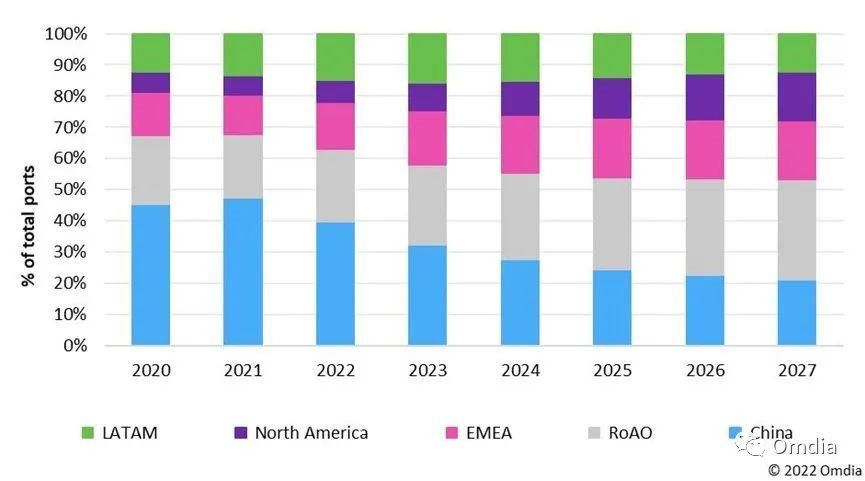The network of PON consists of three parts: OLT (usually placed in the computer room), ODN, and ONU (usually placed in the user's home or in the corridor close to the user). Among them, the part of lines and equipment from OLT to ONU are passive, so it is called Passive optical network (PON), also known as optical distribution network (ODN). With the popularity of optical fiber communication, more operators are using PON network to support the unified optical access network, Provide mature FTTH solutions to provide users with services such as data, video, voice, etc
According to the latest forecast report from a well-known structure, the global PON market size will grow at a compound annual growth rate (CAGR) of 12.3% between 2020 and 2027, and is expected to reach $16.3 billion by 2027, far higher than the $8.2 billion in 2020. The consumption of ONT/ONU ports has shown a strong trend in recent years, with further deployment of FTTH and PON technology in non residential areas in different regions and countries driving this growth. With the adoption of 10G and 25G solutions, PON can now be used to support mobile xHaul and commercial services. By the end of 2022, the revenue of next-generation PON port devices is expected to account for 50% of the total revenue of PON port devices, and by 2027, it will account for 87%. This includes Combo PON port solutions that can support 10G or 25G PON as well as 50G PON. At the same time, the shipment volume of PON OLT port is gradually increasing, reflecting the trend of deploying, expanding, and upgrading the network. With the maturity and popularization of GPON technology, as well as the application of 10G EPON, OLT port consumption is also an indispensable part.
According to reports, China has long been the largest consumer of PON access devices. This is because China has long adopted FTTH construction nationwide and has a large population and application. In 2020, China accounted for 45% of the total consumption of PON device ports. China will continue to consume PON equipment, but will no longer dominate during the forecast period. By 2027, operators in Europe, the Middle East and Africa (EMEA) and the rest of Asia&Oceania will consume 51% of the total PON ports, which is higher than the 36% in 2020. The rest of Asia and Oceania will experience significant growth at a CAGR of 21.8% between 2020 and 2027. Many operators in this region are upgrading to 10G PON, while others are using GPON to build FTTH networks, such as in India.

In North America, various network operators are increasing their efforts in building and upgrading PON networks, with some operators having higher demands than others. During the forecast period, the region will grow at a CAGR of 24.0%. Public funds will support network expansion and new operators entering the market.
Several countries in Latin America and the Caribbean are investing in PON networks, especially in the Mexican and Brazilian markets. The region is expected to grow at a CAGR of 7.1%. Some cable operators in this region are abandoning DOCSIS 4.0 and supporting PON centric networks.





